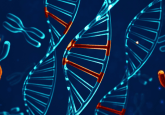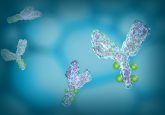2019 World ADC Summit: Bioanalysis Day summary

World ADC Summit is a biannual international meeting of the antibody–drug conjugate (ADC) community members held in Europe in the winters and in the USA in San Diego, California, in the falls. The 2019 Summit held in San Diego celebrated its 10th anniversary and brought together approximately 600 attendees. The program of the 4 day meeting included a workshop day on the 8th of October, a seminar day on the 9th of October and two scientific program days on the 10th and 11th of October.
The 4th analytical and bioanalytical day on the 9th of October was attended by approximately 60 scientists from industry and academia. The day was chaired by Leo Kirkovsky, Director, Clinical Assay Group, Global Clinical Pharmacology, Pfizer (USA). Below is a summary of the presentations from the analytical and bioanalytical day. The copies of the talks can be requested directly from the presenters.
 ADC bioanalysis: 1 year on – were the goals achieved?
ADC bioanalysis: 1 year on – were the goals achieved?
Leo Kirkovsky, Clinical Assay Group, Global Clinical Pharmacology, Pfizer (NY, USA)
[email protected]
Summary
This presentation focused on reviewing the considerations for selection of the most appropriate PK analytes and assays to support exposure-response relationships during ADC clinical development. A recently validated ‘hybrid’ LC–MS assay for the quantitation of Calicheamicin-based ADCs based on the total payload has been found useful in several clinical trials. Nonetheless, because the drug-to-antibody ration (DAR) of those molecules with cleavable linkers changes over time upon administration in vivo, LC–MS PK results cannot be cross-validated with an ELISA method in the absence of the DAR vs. time dependence information.
The levels of unconjugated Calicheamicin payload in human PK samples measured by an LC–MS assay were mostly below the quantitation limit while the levels measured by ELISA were significantly higher. This is because ELISA does not distinguish between the active -Calicheamicin DMH and inactive -Calicheamicin forms. The other challenge with the LC–MS assay was the co-existence of the payload with ADC molecules that may serve as depot-forms of the payload. Any degradation of the ADC may potentially lead to an artificial increase of the payload levels. This requires applying extra precautions to incurred sample handling and special considerations for measuring stability of the payload in the presence of the ADC.
Measuring ADC molecules with different DARs may provide useful information for exposure-response evaluations. However, in the case of Calicheamicin-based ADC with random conjugation it was not technically feasible and perhaps would not be useful, even if it were done.
An LC–MS method for Auristatin0101 payload quantitation using an isotopically labeled internal standard was robust and delivered quantifiable results. Due to the preclinically observed formation of an ADA against Auristatin0101, the clinical assay had to be modified by introducing a dissociation step to break down this complex.
In conclusion, the selection of the best assays / analytes for the evaluation of the exposure-response relationships of ADCs is based on a combination of industry best practices, regulatory experience and technical feasibility considerations.
 Analytical strategies for accelerated approval of ADCs
Analytical strategies for accelerated approval of ADCs
Jian Wang, Senior Principal Scientist, Bristol Myers Squibb (NY, USA)
[email protected]
Summary
- The evolution and current status of antibody–drug conjugate bioanalysis
- Overcome technical challenges in ADC bioanalysis with advancing technologies and strategies
- Learn how to select and correlate various analytes, technologies and platforms
- Stage specificity and continuity of bioanalytical approaches, platforms and strategies at different phases of ADC development
- Regulatory perspectives along with challenges and strategies of bioanalysis for new conjugate modalities
The most debated topics in ADC bioanalysis include: (1) What do we measure, conjugated-antibody or conjugated-payload? (2) Which technology should be used, LBA or hybrid, when both platforms are available for one ADC? (3) Do we measure conjugated-antibody using a DAR sensitive or insensitive assay? (4) Do we measure the same analytes, using the same platform and with the same DAR characteristic at different stages of ADC development in discovery and development? It is a scientifically and technically challenging and a complicated matter with the organizational preference factor involved.
As widely agreed in the industry, with limited information of ADC in clinical, it is still uncertain whether conjugated-antibody or conjugated-payload correlates more closely with ADC efficacy and safety. For future ADC bioanalysis:
- In early discovery, because of its reagent independency, generic protein A or G capture, a hybrid conjugated-payload assay is ideal for screening and candidate selection for ADCs of new payload and antibodies. For ADCs with an existing payload on different antibodies, DAR-sensitive conjugated-antibody can be used as well since anti-payload reagent could have been available already, from previous programs.
- In late discovery and early development, DAR unbiased conjugated-antibody in LBA or hybrid format should be established. Both conjugated-antibody and conjugated-payload are measured.
- Once efficacy and safety information are clearer, continue bioanalysis with one of the conjugated-ADC assays, DAR-independent conjugated-antibody or DAR proportional conjugated-payload, in late stage development is recommended.
 Analytical strategies for acceleration of an ADC: CQAs and comparability
Analytical strategies for acceleration of an ADC: CQAs and comparability
Hillary Schuessler, GSK Associate Fellow, Scientific Leader, CMC Analytical, GSK (PA, USA)
[email protected]
Summary
While breakthrough therapy designation provides an avenue for accelerating the approval process by allowing sponsors to work with regulators to design shortened or combined clinical trial designs, there is usually no abbreviated CMC process. All the requirements for CMC – analytical method validation, process characterization and validation – must still be met.
One approach to accelerated analytical development is to invest early in understanding the structure-function relationship (SFR). Conduct studies early in development to understand how the molecule degrades and which quality attributes impact biological activity, pharmacokinetics and/or immunogenicity. A deep SFR understanding allows for focused method development and validation, enhanced process development and characterization and optimal comparability and characterization.
Invest in peak characterization and forced degradation studies to scope CQAs to enable specifications with acceptance criteria based on clinical experience and SFR understanding. Generally, process and CQA understanding are inversely related with analytical testing: the more CQAs and the process are understood, then less testing could be necessary.
Once CQAs and SFR have been determined, they can be leveraged for the commercial control strategy including comparability studies and specifications. Data that demonstrate a comprehensive understanding of the molecule may enable wider acceptance criteria and fewer assays on the specification, whereas a lack of CQA and SFR understanding leads to more assays on the commercial testing strategy. Assays that are representative of the mechanism of action are key to leveraging a sound SFR understanding to enable commercial specifications.
Combine CMC changes whenever possible so that mAb, ADC drug substance and drug product comparability studies can be conducted simultaneously. This is a higher risk comparability strategy that should be balanced by process development and more testing. Alternatively, limit changes until after approval, resulting in a larger, comprehensive comparability package post-biologics license application. Engage regulatory agencies early with proposals and justification with data to enable a useful discussion on regulatory strategy.
 From deep characterization to sub-ppb payload metabolite ID: high-resolution MS applications in ADC analysis
From deep characterization to sub-ppb payload metabolite ID: high-resolution MS applications in ADC analysis
Antonio Triolo, Head, Laboratory of Advanced Analytics for Development, Menarini Ricerche SpA (Florence, Italy)
Summary
Case studies were presented from the characterization of MEN1309 / OBT 076, an ADC developed in collaboration between Menarini and Oxford BioTherapeutics (UK), consisting of a monoclonal antibody conjugated at accessible Lys residues to a maytansin derivative (DM4), in clinical development for non-Hodgkin’s Lymphoma (NHL) and solid tumors.
The first example was the detection and identification of the payload catabolites in cynomolgus serum after 1- and 5 mg/kg non-radiolabeled ADC administration, which proved to be challenging due to the low concentration (sub- to low-ng/mL) of the analytes. Both detection and identification were obtained in a single LC–MS run using data-independent analysis. The accurate masses of typical fragment ions of payload and its expected biotransformations were used to locate with high specificity and sensitivity the DM4-related compounds in the chromatogram and the corresponding MS/MS spectra were used to elucidate the structures of unknowns. Four catabolites were found: cysteinyl-DM4, 4-guanidino-TBA-DM4-butanoic acid, Lys-SPDB-DM4 and TBA-DM4, as well as unchanged DM4.
The second presented example was aimed at finding the conjugation sites of the antibody and their batch-to-batch consistency. After ADC digestion with trypsin/LysC, the obtained peptides were analyzed by LC–MS/MS; the conjugated peptides were detected by extracting the masses of the DM4 reporter ions and identified via accurate mass and MS/MS sequencing, permitting to localization of the substituted Lys residues. In addition, the sum of the extracted mass chromatograms of the DM4 reporter ions for each examined batch provided an excellent fingerprint of the batch-to-batch consistency of the conjugation process.
Finally, an N-in-one LC–MS/MS method for the comprehensive profiling and quantitation of polysorbate 80 in ADC formulations was presented. In this case, quantitation was obtained by extracting the oleoyl-dioxolanylium ion from the high-energy acquisition data set.
 Streamlining analytics to support research and early development of novel ADC modalities
Streamlining analytics to support research and early development of novel ADC modalities
John Valliere-Douglass, Associate Director, Seattle Genetics (WA, USA)
[email protected]
Summary
We describe the implementation of two distinct MS approaches for bottom-up and top-down characterization of ADC quality attributes in a high throughput environment. In the bottom-up approach, peptide map has been implemented for high throughput screening of mAb and ADC PTMs and sequence variants. For top-down ADC characterization, native size exclusion chromatography mass spectrometry has been utilized for accurate, quantitative assessments of DAR and drug-distribution on a diverse portfolio of ADC chemotypes.
These cases highlight a broader strategy at Seattle Genetics whereby we seek to future-proof analytical development activities and timelines by developing chemotype-agnostic, platform high throughput approaches. Our vision is to have a suite of MS-based methodologies that sensitively detect and quantitate molecular product quality attributes so that critical process development activities are not delayed unnecessarily by molecule specific analytical method development.
 Single molecule 3D image: an approach to reveal antibody structural dynamics and conformational changes
Single molecule 3D image: an approach to reveal antibody structural dynamics and conformational changes
Gang (Gary) Ren, Scientist, Lawrence Berkeley National Laboratory (CA, USA)
[email protected]
Summary
Antibodies play an essential role in the pharmaceutical industry. The design and engineering optimization of pharmaceutical antibodies requires a tool for 3D structure characterization. Although current techniques, including X-ray, NMR and cryo-EM can provide atomic resolution structure of ridge-body proteins, the low-resolution 3D structures of flexible proteins, such as antibodies, remains a challenge. Moreover, the nature and character of antibody fluctuation and dynamics was rarely discussed. Recently, we developed a technique, named individual-particle electron tomography (IPET), for the 3D structure determination of flexible macromolecules. Through the images of each individual macromolecule imaged from a series of tilt angles by electron tomography, we can obtain a low-resolution (1–2 nm) 3D density map from each individual macromolecule. Hundreds of 3D maps from hundreds of individual antibody particles provided us the means to reveal the structural variety and conformational changes of the antibody via flexible fitting the crystal structure into the EM density envelopes. The conformational variety provided us a new method to characterize the dynamics and conformational changes of the antibody. The characterization of the antibody structure variety provides us a novel pathway to study the macromolecular dynamic character, equilibrium fluctuation, mechanism, aggregation, functional deficiency and even structural changes during chemical reactions in the future.
 Explore advances in preclinical analytical strategies
Explore advances in preclinical analytical strategies
Kathryn Pugh, Analytical Chemist, Spirogen (London, UK)
[email protected]
Summary
A trend towards the use of less potent drug molecules on ADCs has given rise to the need for higher DAR species. One way to achieve this is to create a DAR8 species where all interchain disulphide bonds are broken and these cysteine residues are used to bind the drug molecule (classical conjugation); however, this has given rise to concerns over the stability of the resulting DAR8 ADCs. We performed a pharmacokinetic study as a head to head comparison of DAR0 (antibody only), DAR2 (site specific conjugation at an engineered site), DAR4 (stochastic) and DAR8 (classical conjugation) species of the HER2 antibody and the pyrrolobenzodiazepine drug molecule, SG3584. The antibody/ADCs were isolated from the rat serum, collected at time points over a 27-day period and the amount of light chain, heavy chain and conjugated drug present were measured by both ELISA and LC–MS/MS. As expected, the heavy chain of the ADCs had a slightly lower half-life (~10 days) than the antibody (13.5 days); nevertheless, the half-lives across the DAR species were very similar. Most interesting was the similarity in half-life of the light chain across the DAR species, with DAR2, DAR4 and DAR8 all having a half-life of 10.1 to 10.8 days (as measured by ELISA). Based on this evidence, it is our opinion that classical DAR8 ADCs can provide a stable means of providing higher DAR ADCs; however, this should be analyzed on a case by case basis because it relies on the inherent stability of the non-covalent interactions between the light chain and heavy chain and between the two heavy chains of the antibody.
 ADME considerations and bioanalytical strategies for pharmacokinetic assessments of ADCs
ADME considerations and bioanalytical strategies for pharmacokinetic assessments of ADCs
Anton Rosenbaum, Senior Scientist, AstraZeneca, South San Francisco (CA, USA)
[email protected]
Summary
Complex biotherapeutics, such as ADCs, present significant bioanalytical challenges and demand several approaches to describe their pharmacokinetic profiles. Two case studies were presented to illustrate the bioanalytical challenges encountered from the increased complexity of analytes resulting from the catabolism of ADCs.
Bioanalytical strategy employed for MEDI4276 was described previously. MEDI4276 consists of biparatopic humanized antibody attached via protease-cleavable peptide-based maleimidocaproyl linker to tubulysin toxin (AZ13599185) with average DAR of approximately4. Tubulysins can undergo ester hydrolysis (deacetylation), which leads to a less potent catabolite. In the case of MEDI4276, AZ13599185 converts to AZ13687308, which then leads to the formation of a new deacetylated ADC catabolite, denoted as MEDI1498. To characterize the various species resulting from MEDI4276 three novel multiplex bioanalytical methods were developed, validated and employed to characterize PK of subjects participating in the clinical trial NCT02576548. The first method employed hybrid ligand-binding assay liquid chromatography coupled with tandem mass spectrometry (LBA-LC–MS/MS). This method enabled simultaneous measurement of total antibody and total ADC (antibody-conjugated AZ13599185). The second LBA-LC–MS/MS assay addressed the catabolism of the conjugated tubulysin warhead (antibody-conjugated AZ13687308) from MEDI1498. The third method quantified the released toxin and its major catabolite.
MEDI3726 structure has been described previously. Briefly, this ADC comprises of a prostate-specific membrane antigen targeting antibody conjugated in a site-specific manner via maleimide to heavy chain C220 with tesirine (SG3249) with average DAR of approximately 2. To ensure site-specific conjugation, the following mutations were introduced: C214S in the light chain and C226V and C229V in the heavy chain. Due to the complexity arising from the loss of interchain disulfides, four bioanalytical methods were developed and validated. The methods quantified six different analytes, representing >40 different potential catabolites of MEDI3726. Further, these methods were applied to interrogate PK of subjects participating in the clinical trial NCT02991911.
 A view from the top: integrated LC–MS strategy for intact ADC/antibody analysis
A view from the top: integrated LC–MS strategy for intact ADC/antibody analysis
Cexiong (Winston) Fu, Principle Scientist, Takeda (IL, USA)
[email protected]
Summary
Top-down MS has emerged as a powerful analytical platform for biologics and ADC characterization and development. Top-down MS has the unique potential of acquiring both the top-view features (DAR, DAR distribution) and structural details (conjugation site, post translational modifications etc.) of ADCs in one go, circumventing the lengthy and tedious sample preparation required for bottom-up approaches. In this talk, we illustrated four examples of online-native HIC MS, SEC-MS, RPLC and native RPLC-MS to build a holistic characterization of key ADC attributes including intact mass, aggregate and fragments, glycoforms, post-translational and chemical modification, DAR value and profile, conjugation site and occupancy and positional isomers. We also reviewed the history of key developmental milestones of top-down MS approaches and the future prospect of key challenges in four perspective areas including: 1) high-resolution (native/denature) protein chromatography/electrophoresis compatible to online MS; 2) ionization efficiency improvement; 3) Fragmentation (ETD, ECD and UVPD) method to enhance sequence coverage; 4) Powerful data mining software suite for multidimensional data.
 Considerations for ADC bioanalytical and immunogenicity strategies
Considerations for ADC bioanalytical and immunogenicity strategies
Seema (Chauhan) Kumar, Associate Director, EMD Sereno (MA, USA)
[email protected]
Summary
Translational quantitative pharmacology models are often used for preclinical to clinical translation of ADCs to predict clinical PK/PD, safety margins, human efficacious doses and dosing regimens. These quantitative pharmacology models rely on high-quality bioanalytical measurements to integrate preclinical PK and PK/PD data. Due to the complex multi-component structure and inherently heterogenous nature of ADCs, multiple ADC analytes are typically measured to gain insights into exposure-response relation with respect to the safety and efficacy of ADCs. Ligand binding assays, liquid chromatography-coupled mass spectrometry and a hybrid of these assay platforms are typically used to quantitate ADC analytes. The changes in assay critical reagents (generic anti-human vs anti-idiotypes), assay formats (DAR sensitive vs. DAR insensitive) and assay platforms (LBA vs. LC–MS vs hybrid-LC–MS) across different stages of drug-development may impact observed PK profiles and parameters. An integrated bioanalytical and translational strategy should thus be defined early on during ADC development while keeping in mind that one strategy may not fit all. Case studies showcasing such challenges were presented.
Immunogenicity risk assessment drives ADC immunogenicity testing strategies and mitigation plans. Due to their multi-domain structure and our limited understanding from the current clinical data, ADCs are typically classified under the low-to-moderate immunogenicity risk category. Like other biologics, multi-tiered immunogenicity testing strategies are employed for ADCs. Additionally, the risk-based, fit-for-purpose approach and product development stage may drive the need for domain-specific characterization assays against individual ADC domains. The focus should always remain on understanding ADA incidence in the context of their impact on PK, PD, efficacy and safety. Clinical immunogenicity assessment strategy and ADA incidence for five approved ADCs were presented.





